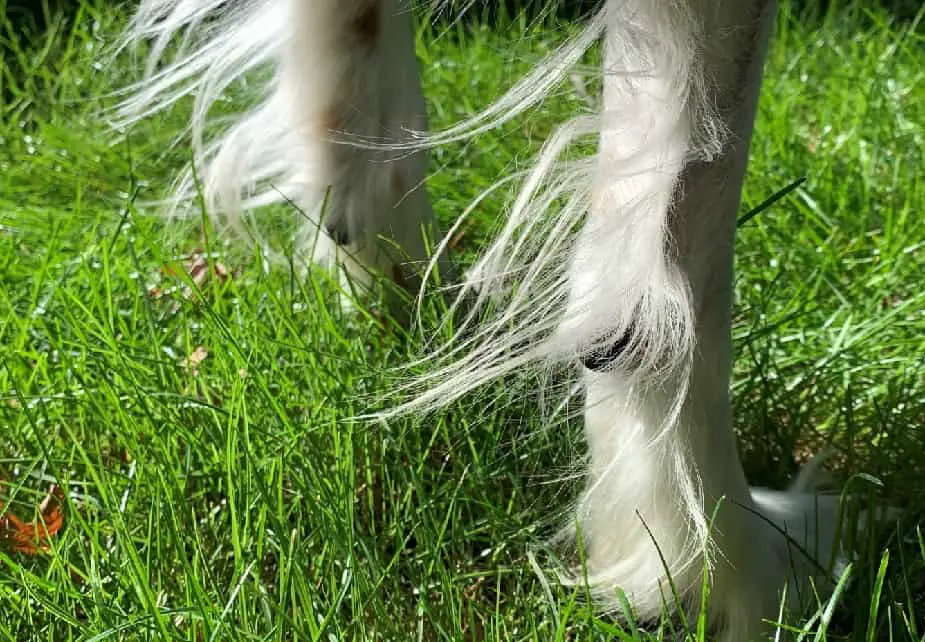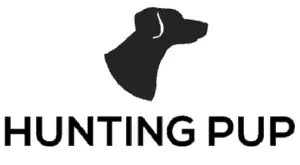
Many dog owners often wonder whether they should have their dog’s dew claws removed. Hunting dog owners likely never get confronted with the question as the breeder has the dew claws removed before the owner receives the dog.
Why do hunting dogs have dew claws removed? Dew claws are prone to injury if not removed from hunting dogs. They can easily get caught on branches or undergrowth while the dog running through cover looking for game. Removing the claws proactively, in most cases within days of birth, prevents a more difficult to treat injury in the future. It is easier to treat the surgical removal of the dew claws, than an injury in the field where the dogs and hunter are often far from veterinary care in a far from sterile setting.
It’s important to understand what the dew claw is, and what function is serves, in order to understand the implications of removing it. In many ways, it’s similar to a human thumb—a digit off to the side of the paw. However, unlike our own thumbs, the dew claw serves very little purpose for most dog breeds. Evolution has made it basically unnecessary—its position further up the leg means that it does very little for the dog. But like the rest of a dog’s digits, it has a pad and claw, and this claw grows at the same rate as the rest of the claws. Some dog breeds do not have a dew claw at all. Most have the claws only on the front paws. However, some dog breeds have the claws on the back legs as well. A few breeds even have double claws on their back paws.
The claw is what causes injuries, particularly in hunting dogs. When the dog is out running through the underbrush, the claw itself, higher up on the leg and at the perfect level to snag on things, can get caught on brambles, sticks, grasses, or other fauna. This can cause some serious injuries. The claw might be pulled out, or the pad of the dew claw itself can rip. Some of these injuries may require surgery to fix, or stitches, and can leave a dog in bandages for weeks. In addition, if these claws are left untended or unclipped, they can grow out of control. This can also cause injuries. For these reasons, hunting dog breeders find that the best option is simply to remove the dew claw, thus removing any possibility of an injury.
Another reason why these claws are sometimes removed is because people believe that it presents a cleaner, more attractive appearance for dogs that will be shown. However, this is purely cosmetic. Since this surgery is elective and can have complications of its own for the dog, this is often considered a poor choice. In addition, some dogs are actually required to retain the dew claw, as it is part of the breed’s standard.
It is a common believe in non-hunting breeds that removing the claws at all is unnecessary. Keeping the dew claw trimmed well means that the possibility of it catching on something is greatly lowered. In addition, this prevents any over-growing of the claw. Many dogs have claws that are close to the leg, so they do not protrude far, and for this reason are less likely to get snagged on anything. In addition, although there are not many risks associated with the removal of the dew claw, it can still be painful and traumatic for puppies, and can sometimes have complications. Non hunting dogs are not exposed to the same harsh environments which also reduces the risk of dew claw injury. Therefore, many owners believe that the best option is to leave the claws as they are.
When to Remove A Dew Claw
If a dog has its dew claws removed likely the procedure occurred during the first few days of the dog’s life. This causes as little stress as possible to the dog, at point in that the dog’s life movement is limited in the wound is easier to car for reducing the risk of complications. If the dew claw isn’t removed at this early stage, it can also potentially be removed when the dog goes in for a spay or neuter. This way, the dog is already anesthetized, and the claws can be removed with a minimum of discomfort for the dog. Having dew claws removed on an adult dog involves much more care than a puppy as it is far harder to limit an adult dog’s movement and keep the wound sterile.
Removal of a Dew Claw After an Injury
Occasionally, if the claws were not removed, the dog may suffer an injury to one dew claw, and after this occurs, a veterinarian may suggest removing the claws then. This can help to prevent any further injuries to the dog. The dog will be anesthetized for the procedure and will likely require an overnight stay at the vet.
The Benefits of a Dew Claw
The dew claw does actually provide some benefits for the dog. It can help with traction—if a dog is running at speed, the paw bends far enough that the dew claw touches the ground, and this can actually add more grip and give the dog a better push off of the ground. This can help the dog when it’s hunting, as it can move more quickly and surely across large spaces. However, in some cases, the dew claw is not as firmly attached to the leg, and in this case, if pressure is put on it, it can fold. This may be a stronger case for removal than in dogs with dew claws that are firmly attached and can offer traction.
Why does my dog keep licking and biting at its dew claw?
Many pet owners may notice that their dog spends time chewing or licking its dew claw. This can be caused by a number of things. Sometimes the dog may have picked up a parasite or allergy around the claw area. In this case, the dog will need to see a veterinarian, who can provide medications in order to solve the problem. Another reason a dog may be chewing on its claws is because it’s bored or stressed. If this is the case, it’s best to either provide more stimulation for the dog, or attempt to discover what is stressing the dog and alleviate that stress. The dog can then be encouraged to engage in other activities instead of biting at its claws.
